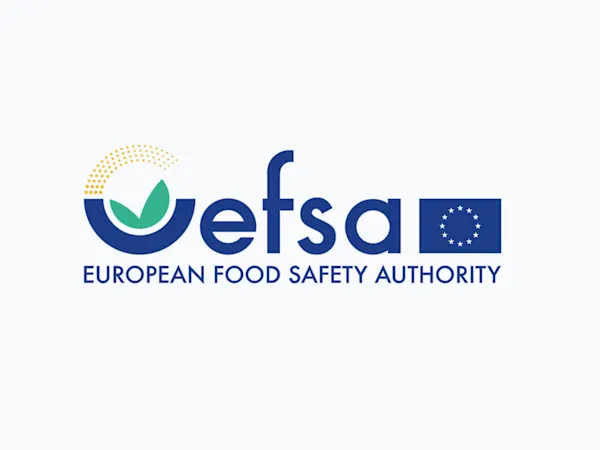
EFSA Seeks Feedback on Overhaul of Weight of Evidence and Biological Relevance Guidance
EFSA launches consultation on updating its Weight of Evidence and Biological Relevance guidance, aiming to streamline chemical risk assessment practices.

In a significant regulatory move, the European Chemicals Agency (ECHA) has updated its assessment on simple inorganic silicon (Si) compounds, tightening regulations for a wide range of silicon-based substances. The new report, released in September 2024, focuses on the varied forms of silicon compounds and their associated health risks, highlighting the need for stricter regulatory risk management measures across Europe.
Silicon compounds play a critical role in various industries, with applications ranging from adhesives and sealants to coatings, metallurgy, electronics, and construction materials. These compounds include familiar names like Silicon Dioxide (SiO₂), Silicon Carbide (SiC), and Trichlorosilane (SiHCl₃), each having specific uses depending on their unique properties.
For instance, Silicon Dioxide (SiO₂), commonly known as silica, is a versatile compound used in the manufacturing of glass, ceramics, and concrete. It also finds its way into cosmetic products, toothpaste, and food additives as an anti-caking agent. Silicon Carbide (SiC) is heavily used in abrasives, semiconductors, and metal surface treatments, owing to its hardness and thermal stability. Meanwhile, Trichlorosilane is essential in the production of silicon wafers used in electronics and solar cells.
Despite their widespread applications, these compounds can present significant risks to human health and the environment, particularly when workers or consumers are exposed to their harmful forms.
The ECHA report identifies both crystalline and amorphous forms of silicon compounds as substances of concern. Crystalline forms, such as Quartz (SiO₂), Tridymite, and Cristobalite, have long been associated with severe health risks. When inhaled, respirable crystalline silica (RCS) can lead to silicosis, a debilitating lung disease, and is also classified as a Category 1B carcinogen, meaning it can cause lung cancer. Workers involved in industries such as construction, stone cutting, quarrying, and ceramics manufacturing are particularly at risk due to the dust generated by these processes.
In contrast, amorphous forms of silicon, such as Synthetic Amorphous Silica (SAS), have been found to pose long-term risks primarily through inhalation exposure. The new report highlights concerns about chronic lung damage from exposure to non-crystalline silica particles, though these forms are not classified as carcinogens. Industries using SAS in adhesives, sealants, paints, inks, and cosmetics are urged to pay close attention to potential regulatory changes.
ECHA’s report draws attention to the extensive use of these silicon compounds across multiple sectors, which increases the potential for worker exposure and environmental release. Here are some of the key uses of silicon compounds highlighted in the report:
With silicon compounds being integral to so many industrial processes, ECHA’s recommendations have far-reaching implications for sectors like construction, manufacturing, and technology.
The revised assessment calls for a variety of regulatory actions, including harmonised classification and labelling for substances like Silicon Dioxide (SiO₂) and Trichlorosilane. The ECHA proposes introducing occupational exposure limits (OELs) for workers exposed to respirable crystalline silica (RCS), as well as restrictions on the use of silicon compounds in certain consumer products.
Crystalline Silica: ECHA is pushing for greater restrictions on the use of crystalline silica in industries that generate significant amounts of dust, including quarrying, stone-cutting, ceramics, and construction. The agency notes that these activities present a high risk of exposing workers to carcinogenic crystalline dust.
Amorphous Silica: For non-crystalline forms like synthetic amorphous silica (SAS), ECHA is considering further regulatory measures, particularly in industries where workers are likely to inhale dust over long periods, such as paint manufacturing, inks, and polymers.
The wide-ranging uses of silicon compounds mean that the impact of these new regulations could be felt across various industries. Companies will need to adapt their production processes, safety protocols, and worker protections to comply with the updated regulations. Specifically, industries may need to introduce dust suppression technologies, provide protective equipment, and ensure that proper ventilation systems are in place to minimise exposure to harmful silica dust.
Additionally, consumer products containing silicon compounds—especially those used in cosmetics, paints, and construction materials—may face new labelling requirements and restrictions on use.
ECHA’s recommendations underscore the need for ongoing risk assessments and monitoring within industries that rely heavily on silicon-based materials. Companies should remain vigilant for further regulatory updates, particularly concerning occupational exposure limits and potential restrictions on consumer goods.
Foresight continuously tracks 1000s of sources and maps updates to your portfolio:




EFSA launches consultation on updating its Weight of Evidence and Biological Relevance guidance, aiming to streamline chemical risk assessment practices.

Germany's CONMAR-Impact study sets new environmental quality standards for TNT in marine ecosystems, raising industry-wide compliance questions.

EU Member States urge the Commission to accelerate the REACH revision, citing urgent health, environmental, and industry competitiveness needs.
Subscribe to Foresight Weekly and get the latest insights on regulatory changes affecting chemical compliance.
Free forever. Unsubscribe anytime.
Read by professionals at